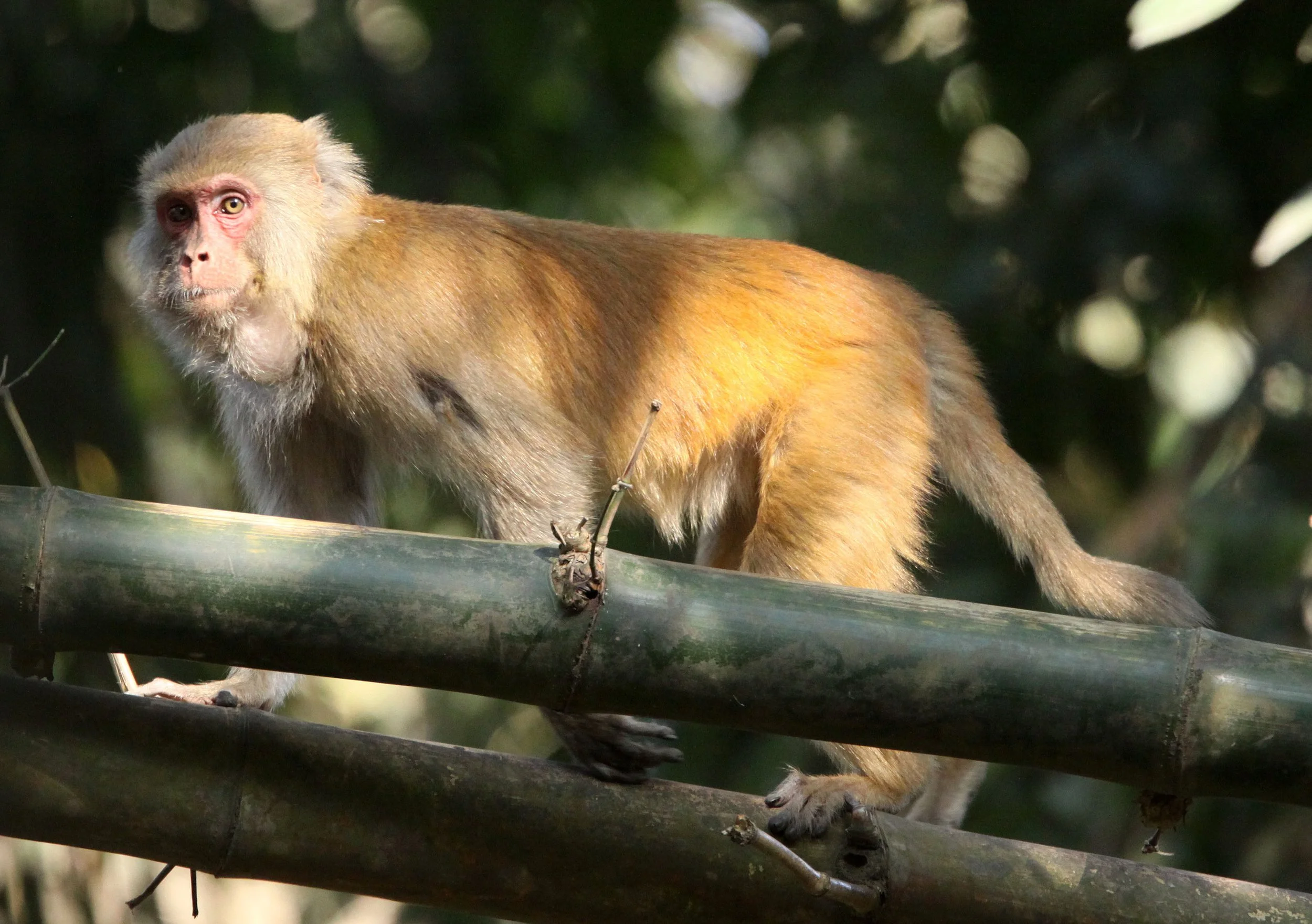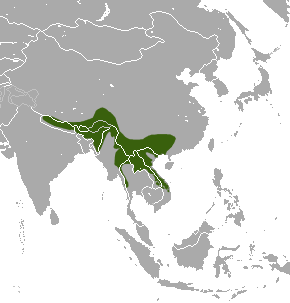
Assam Macaque
The Assam macaque (Macaca assamensis) or Assamese macaque is a macaque of the Old World monkey family native to South and Southeast Asia. Since 2008, it has been listed as Near Threatened on the IUCN Red List, as it is experiencing significant declines due to poaching, habitat degradation, and fragmentation.
The Assam macaque has a yellowish-grey to dark brown pelage. The facial skin is dark brownish to purplish. The head has a dark fringe of hair on the cheeks directed backwards to the ears. The hair on the crown is parted in the middle. The shoulders, head and arms tend to be paler than the hindquarters, which are greyish. The tail is well-haired and short. Head-to-body-length measures 51 to 73.5 cm (20.1 to 28.9 in), and the tail is 15 to 30 cm (5.9 to 11.8 in) long. Adult weight is 5 to 10 kg (11 to 22 lb).
The Macaca assamensis "Nepal population" is endemic to Nepal and likely in some way distinct from the two recognized subspecies, which occupy adjacent areas to the southeast and east of the range of M. assamensis. There is a gap in northeastern India between the two main population pockets, specifically between central Bhutan and the south side of the Brahmaputra River; the east bank of its upper course marks the division between the two recognized subspecies (This gallery contains images of both subspecies):
The eastern Assamese macaque, M. a. assamensis, occurs in Bhutan, Arunachal Pradesh, Assam, Manipur, Meghalaya, Mizoram, Nagaland, Sikkim, and Tripura in northeastern India, into northern Myanmar, southeast through the Myanmar-Thailand border ranges as far as Chongkrong, to the upper Mekong in Tibet, into the provinces of Guangxi, Guizhou, Tibet and Yunnan in southwestern China, in Thateng in northern Laos, and Hoi Xuan in northern Vietnam;
The western Assamese macaque, M. a. pelops, is found from central Nepal through Uttar Pradesh, Sikkim, Assam and northernmost West Bengal in northern India, into central Bhutan and the Sundarbans in Bangladesh.
During surveys carried out in 1976, 1978, and 1984 in Nepal, Assam macaques were found to be patchily distributed along rivers in tropical and subtropical forests at altitudes from 200 to 1,800 metres (660 to 5,910 ft). They are apparently absent from areas west of the Kaligandaki River. In India, they live in tropical and subtropical semievergreen forests, dry deciduous and montane forests, from the sea level to altitudes of 4,000 metres (13,000 ft). They usually inhabit hill areas above 1,000 m (3,300 ft), but in the wetter east they may occur even in the lowlands, and frequent areas that only marginally reach this altitude. In Laos and Vietnam, they prefer high altitudes, usually above 500 m (1,600 ft). In forests on limestone karst, they occur in much lower elevations.










































































































































































































